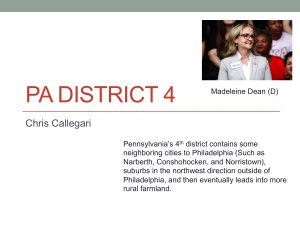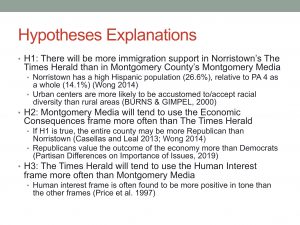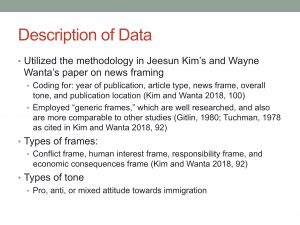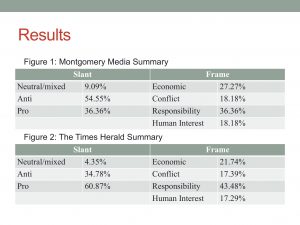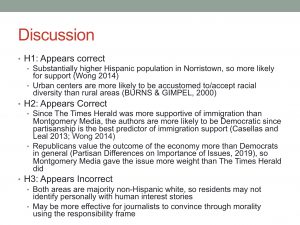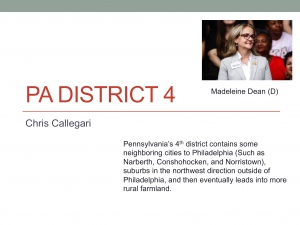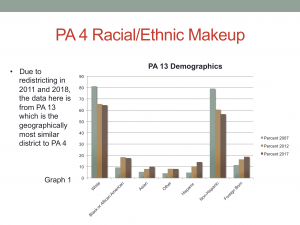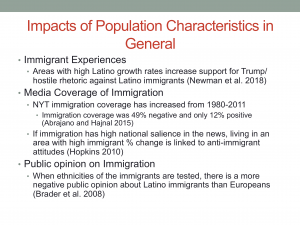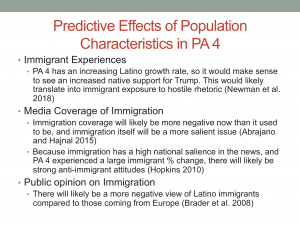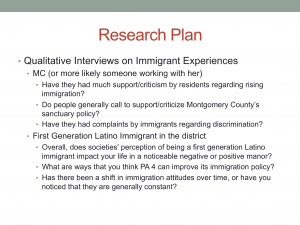Summary:
I recently reached out to ACLAMO, a Hispanic immigrant advocacy organization based in Montgomery County, Pennsylvania. I wanted to share some of my research results and make some observations/suggestions for how to be most effective in immigrant outreach moving forward. After comparing news sources from Montgomery County and Norristown, an urban region within the larger county, I argue that Norristown has a more positive social view of immigrants compared to Montgomery County as a whole. Norristown is also more immigrant-dense, so it likely also has stronger immigrant ties. Although at first one may be inclined to give more support the densely Hispanic immigrant populated region (Norristown), I argue that it would be most effective to offer outreach to the rest of Montgomery County where immigrants tend to have weaker social ties. Past research shows that Hispanic immigrants have weaker ties in all areas but “informational support.” Because advocacy groups most often use education and teaching—which are still extremely valuable—I argue that ACLAMO would be more effective by creating communal areas for people with similar identify backgrounds to interact. These interactions may allow the immigrants living in a sparsely populated area with a more anti-immigrant sentiment to form close connections with others. Other research shows that social ties are important to not feel isolated and to share a communal narrative with others. ACLAMO has dedicated itself to helping Montgomery County’s Hispanic and immigrant population, and I believe that focusing on areas outside of Norristown with the intention to form social ties not necessarily through education is the most effective possible next step.
Full Text:
Immigration is rising globally—leading to a larger amount of migrants and a potential problem for how to best handle societal integration. In order to best help immigrants feel comfortable in their new homes, immigrant advocacy groups often play a central role. Because of this, it is essential that they are acting most effectively in order to help the immigrants who need it most.
I decided to research Pennsylvania District 4—which includes most of Montgomery County. I wanted to reach out to ACLAMO to thank you for your dedication to the Latino community, and to share some of the results from the research that I conducted on the region. In addition, based on my results and data from other studies, I will offer some observations and recommendations for future initiatives for your consideration.
In my study, I looked at two newspapers—Norristown’s The Times Heraldand Montgomery County’s Montgomery Media—in order to determine public opinion on immigration in the two regions. I hypothesized that because Norristown has a higher immigrant and Hispanic population than the rest of Montgomery County as a whole, then the newspaper based in Norristown would be more supportive of immigration though article tone and framing (Wong 2014;BURNS & GIMPEL, 2000). Frames are a heuristic cue that helps people reach a particular conclusion based on the way the information was presented. After conducting a media content analysis of both papers from December 2018 to January 2019, the hypothesis was found to be correct. Norristown’s The Times Herald tended to have a more positive tone towards immigration and also tended to use frames more closely associated with immigration support when compared to Montgomery County’s Montgomery Media.
One’s inclination may be to focus limited resources on areas of higher population. My suggestion, however, is to focus more attention on regions outside of Norristown which are less urban. Although there may be fewer people to appeal to in those areas, immigrants who reside in the rest of Montgomery County may face a more negative attitude from natives (assuming that local media coverage is representative of the native population). In addition, although immigration advocacy and support is important in more urban areas with a higher percentage of immigrants and Hispanics, support outside of an urban center may be even more important. Patricia Fernández-Kelly, a Princeton professor who is a part of the Center for Migration and Development, is studyinghow different immigrant children cope with living in a new environment. She primarily conducts qualitative interviews with residents of Princeton and Trenton in order to understand their thoughts on integration in their new homes. To give context, Trenton tends to have fewer resources and advocacy groups which help support immigrants in comparison to Princeton. She found that students report a higher amount of negative racially pointed language in Trenton, but also view their story as if they are the “protagonists” attempting to overcome discrimination. The children in Princeton, however, tend to feel more isolated and view themselves as outsiders. This situation is somewhat different than in PA, however, because Princeton is less immigrant dense yet more immigrant supportive. Trenton has a larger share of immigrants, yet there is a stronger anti-immigrant sentiment perceived by immigrant children. In PA, Montgomery County is less immigrant dense, but less immigrant supportive than Norristown in particular (according to my findings).
Immigrants from a high concentration area (Trenton) were found to hold a more universal central narrative among the interviewed children than in the low concentration area; and the high concentration area in PA (Norristown) already holds a more positive social view of immigration than Montgomery County. Both of these factors lead me to predict that there is less marginal benefit in conducting more outreach in Norristown, and possibly more benefit in reaching out to the immigrant population residing in suburban/rural Montgomery County. Norristown already has a positive public opinion and an opportunity for immigrants to have strong social ties due to the high concentration. Outreach in Trenton may be logical because of the more hostile social environment, but Norristown—although still requires some outreach—can likely do well with comparatively less.
Although outreach to the rest of Montgomery County has the potential to become ineffective and leave residents isolated (like in the case of Princeton), because of the comparatively anti-immigrant social opinion I argue it is more important to provide systemic support. Hispanic immigrants within suburban/rural Montgomery County likely have much weaker ties than people living in Norristown both because of the decreased proximity to others who share similar ethnic backgrounds, and the smaller percentage of people who identify as Hispanic. Because the immigrant community in Princeton does experience feelings of loneliness and isolation, I suggest that the most effective way of promoting a positive experience for immigrant children is by focusing to expand their social network of people with similar backgrounds, in addition to many of the services that advocacy organizations like ACLAMO traditionally provide such as education, case management, etc. Although those other services are of a high importance, researchers such as Edna A. Viruell-Fuentes have found that Hispanic immigrants have fewer social ties compared to non-Hispanic natives except for “informational support”. Oftentimes, advocacy organizations promote educational opportunities—which is most definitely still useful—but sometimes it may be more effective to simply facilitate a common place where people who may feel marginalized can congregate and potentially form connections. These connections, as seen by Fernández-Kelly’s research, are extremely important in creating a unifying identify so that new immigrant groups do not feel isolated and fearful.
Again, I want to thank everyone at ACLAMO for your service, and I hope that this information may be of use. Thank you.
Sincerely,
Chris Callegari
